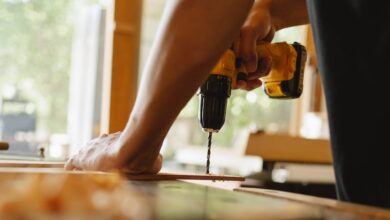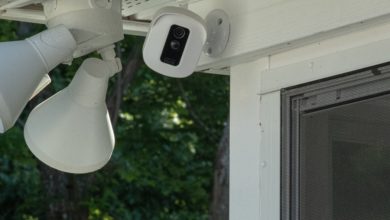Childproofing Your Home: Essential Tips for a Safe and Kid-Friendly Space
KEY TAKEAWAYS
Welcoming a child into the world transforms your life. As parents and caregivers, you prioritize the safety and well-being of your children. But childproofing homes goes beyond securing objects or covering electrical outlets; it involves creating a nurturing environment that encourages exploration while keeping safety intact.
In this article, we’ll explore essential tips to childproof every nook and cranny of your living space, focusing on creating a secure and kid-friendly ambiance.
Understanding Child Development and Safety
Children grow and learn rapidly, reaching various cognitive and physical milestones. Their natural curiosity can lead them into potentially dangerous situations, so it’s crucial to consider age-appropriate childproofing measures that align with their developmental stages.
- Infants and Toddlers: These early years begin with mobility exploration. Infants start rolling, crawling, and eventually walking—increasing their interaction with the environment. Install soft, rounded furniture to minimize bumps, and secure heavy items to prevent tipping. Keep things that are small or could cause choking out of reach.
- Preschoolers: As children engage with their surroundings, their desire to climb and investigate grows. Anchor furniture to walls to prevent tipping and employ window blind cord safety mechanisms. Cabinet and drawer locks are vital to keeping curious hands away from potentially harmful substances.
- School-Age Children: Older kids are more independent but still need protection. Focus on proper lighting in hallways and staircases to prevent accidents. Educate them about household rules, emergency procedures, and the responsible use of electronics.
Essential Childproofing Tips for Every Room
- Living Room: Soft edges on furniture reduce the risk of injuries, while outlet covers and cord management ensure electrical safety. Access doors, such as the BA-MSD Medium Security access panel, can balance security and accessibility. With self-closing and self-locking mechanisms, they can provide secure access to utilities while maintaining child safety.
- Kitchen: Cabinet and drawer locks keep hazardous items out of reach, while stove guards and oven locks prevent burns. In this area, remove choking hazards like small magnets from the refrigerator.
- Bedrooms: Cribs should meet safety standards with snug-fitting mattresses and appropriate bedding. Window blind cords also pose a strangulation risk, so use cord safety devices. Heavy pieces of furniture need to be firmly attached to the walls.
- Bathrooms: You must consider having toilet locks and bathroom door latches to prevent drowning hazards. Put medicines and cleaning supplies in locked cabinets so they are out of reach.
- Hallways and Stairs: Ensure proper lighting to guide safe movement and secure wall-mounted items to prevent them from becoming potential hazards.
Creating Safe Outdoor Spaces
- Yard and Garden Safety: Install secure fencing and gating to prevent wandering. You must also remove toxic plants and chemicals from the garden; and check the play items outside for wear and tear regularly.
- Garage and Storage Areas: Keep dangerous things out of the way. In this area, organize tools and equipment to prevent accidents. Be cautious also when vehicles are in the vicinity of children.
Emergency Preparedness and First Aid
Creating a family emergency plan ensures everyone knows what to do in case of unforeseen events. Simple first aid skills can significantly affect how quickly you treat minor accidents. You must also keep emergency contacts accessible and discuss when to call for help.
Reassessing and Updating Childproofing Measures
Children grow quickly, and their abilities change just as fast. Regularly review childproofing strategies to align with their developmental milestones. As your child becomes more independent, you might need to adjust safety measures accordingly. Staying informed about new childproofing products can enhance your home’s safety.
Educating and Supervising Children
As part of childproofing, it is essential to educate children about safety and supervise their activities. Teach children the proper use of potentially dangerous items like tools or appliances at an age-appropriate level.
Go over household rules about restricted areas. Actively supervise young children at all times, especially around pools, balconies, stairs, or kitchen appliances. You should also set clear boundaries for older children on where they can and cannot go unsupervised. With education and active supervision, you can instill safe habits while allowing your child to explore their environment.
Conclusion
Incorporating childproofing measures into your home is a continuous journey that evolves as your child grows. Creating a safe and kid-friendly environment allows them to explore and learn without unnecessary risks. From the living room to outdoor spaces, each corner of your home can be transformed into a sanctuary of security. Remember, the small efforts you put into childproofing today can lead to a lifetime of well-being for your child.





